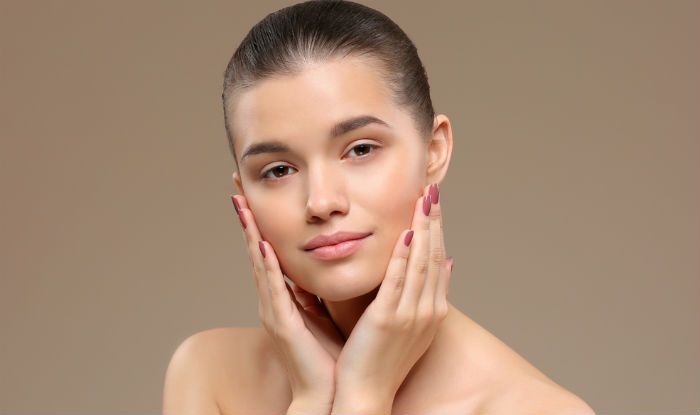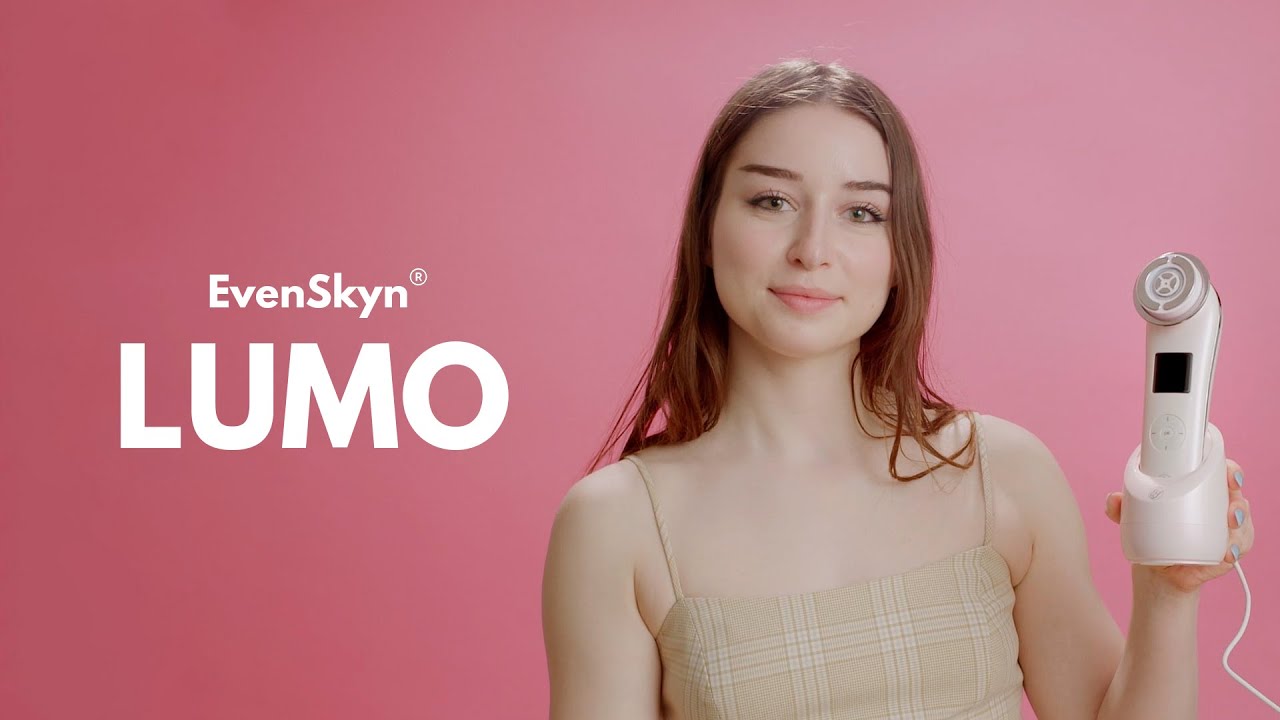Medically Reviewed by Dr. Lisa Hartford, MD
The skin care device market has been noticeably expanding in recent years, boasting a size of $9.5 million only in 2019 and being expected to reach $28,157,2 in 2030, according to a 2020 report published by P&S Intelligence. The most sought-after skincare devices appear to be the ones that allow customers to include them in their own tailored skincare routine based on the type of their skin and the specific issues they target. “While not as effective as professional treatments, these devices can be used in place of them for those who cannot make it to the office,” explains Joshua Zeichner, MD, an Associate Professor of Dermatology and the Director of Cosmetic & Clinical Research in Dermatology at Mount Sinai Hospital in NYC. “They’re also a great option to use between professional treatments as maintenance care for your skin.”
Collagen, an essential protein that is naturally produced by the body and plays a crucial role in skin strength and elasticity, has been shown to noticeably increase in skin treated by novel at-home skincare devices that are based on the use of LED (light-emitting diode) light, radio frequency (RF), and microcurrent technologies. Although these techniques were known before in the medical field, they have been gaining attention only recently in the aesthetic field as effective and relatively safe methods to stimulate collagen production that decreases with age by about 1.0%-1.5% per year, hence treating common age-related skin concerns like fine lines, wrinkles, and sagging skin. With this in mind, keep reading to gain more insight into the significant role of collagen in skin aging and how handy at-home skincare devices can offer a viable solution to the inevitable decrease of collagen with age.
Ongoing Battle Against The Inevitable Loss Of Collagen
Skin aging is a result of different processes that impact a wide range of constituents of the skin, leading to a gradual change in its feel and appearance over the years. Intrinsic and extrinsic aging are the two main skin aging mechanisms, with the first being primarily affected by genetic and hormonal changes, and the latter affected by other non-hormonal and non-genetic factors, such as sun exposure, stress, smoking, and alcohol consumption. There are multiple clinical manifestations that indicate extrinsically aged skin, among which are fine lines, wrinkles, pigmentation, and skin fragility, Collagen is a protein produced by the body and plays an essential role in preserving the elasticity and firmness of the skin. The main collagen found in human skin is called type I collagen, making up a staggering 80%-90% of the overall collagen produced by the body. This primary collagen is produced by a type of cell found mainly in the dermis called fibroblasts, which aid in the production of elastin protein that increases skin flexibility and resilience. The physical tension of the extracellular matrix (ECM) impacts fibroblasts since it is where they are embedded. Additionally, both the biochemical stimuli and signaling pathways have the ability to induce the activation of fibroblasts, leading to increased collagen and elastin production. Fibroblasts in the human body become less starting from early adulthood, and the body becomes less efficient in producing collagen, resulting in a decrease in its production by at least 1 percent a year. External environmental factors such as sun and pollution exposure can further add to the skin damage that occurs over the years.
The body’s ability to produce collagen decreases with age and results in the presence of fine lines and wrinkle formation. Additionally, the primary components of the extracellular matrix go through functional and structural changes in the dermis, which are fibrillar collagens, hyaluronic acid and elastin fibers. Not only the amount of collagen produced changes with age, but also the proportion of the types of collagen in the skin. Type I collagen predominantly exists in young skin that has not yet been affected by common skin-aging factors, making up 80% of the skin’s overall collagen. On the other hand collagen type III only makes up about 15% of all collagen in the skin. As the body starts to lose the ability to produce as much collagen as before, the structure of collagen gets more brittle and fragile, resulting in weaker skin structural support and less skin firmness and volume, hence thinner skin and more wrinkle formation. The decline of collagen levels produced by the body also comes with a loss of hyaluronic and results in further less hydrated and supple skin.
There are several anti-aging techniques that aim to influence the production of ECM components by fibroblasts. The proliferation and activation of fibroblast can be influenced by a variety of ligands, including antioxidants, bioactive peptides, vitamins, retinoids, hydroxy acids, and ω6- and ω3-fatty acids. All of these ingredients can directly or indirectly affect collagen production and ECM components.
Stimulating Collage Production With Light 10x Brighter Than The Sun
LED (light-emitting diode) light therapy is one of the leading technologies that has been scientifically tested and yielded promising skin repair and rejuvenation results. Originally developed by NASA for growing plants in space, light-emitting diode therapy is a non-invasive treatment y that aims to increase the production of collagen and improve various skin concerns and conditions, including fine lines, wrinkles, acne and acne scars, eczema, and sun damage. LED light therapy is considered safe because it does not cause any thermal damage to the face. In fact, it is so gentle on the skin that it can actually accelerate the healing of burns, according to research published in Scientific Reports. NASA confirmed in an article that this technology does not involve any heat, explaining that it provides “high-energy efficiency and virtually no heat, despite releasing waves of light 10 times brighter than the Sun.”
There are several types of LED light therapy that are classified based on the wavelengths, each of which corresponds to a different light color that penetrates the skin differently, including red, blue, and yellow lights. Red light therapy is typically the type of LED light applied to the skin to increase collagen production, which has wavelengths that can be found in a range of 630nm-640nm. While it is common to receive red light therapy at clinics, the technology has gained such immense popularity in the skincare industry that it was made accessible for those seeking to gain the anti-aging benefits of LEDs without booking any office appointments. LED face masks, handheld wands, red light panels, and more handy at-home devices can safely yield satisfying skin rejuvenation results when properly and consistently used.
Heating Up Deep Layers Of Aged Skin To Reverse Wrinkles & Fine Lines
Another revolutionary anti-aging technology that has been around for decades but was only recently used for aesthetic purposes is radiofrequency (RF) skin tightening, a nonsurgical FDA-approved procedure that is based on the use of energy waves to generate heat within the deep layer of the skin (dermis), resulting in increased collagen production and hence improvement in the appearance of fine lines and wrinkles. Additionally, since RF energies stand out as being a “color-blind” treatment, they generate the same anti-aging results on any skin type, unlike laser and intense pulsed light systems that can be only used on darker skin colors.
When the face is treated with RF energies, the temperature of the deeper layer of the skin reaches about 50–75°C (122–167°F). According to several studies, the increase in dermal temperature to over 46°C (115°F) and maintaining it for a minimum of 3 minutes results in the release of heat-shock proteins (HSPs) in the body. After triggering the release of HSPs, a healing cascade will start in the body and lead to new collagen and elastic fibers production.
The technology made its way outside aestheticians' clinics to the homes of non-professional users due to the widespread of RF at-home devices. A randomized split-face clinical study that aimed to test the effectiveness of a radiofrequency device for skin rejuvenation at home treated women aged 35–60 years with an RF beauty device and concluded that home-based RF devices are both safe and effective for the rejuvenation of aged skin.
Training Facial Muscles To Firm Sagging Skin
Microcurrent technology is a non-invasive treatment that was first introduced by Thomas W. Wing. D.C., N.D., LAc., a fifth-generation Chinese Doctor, in the late 1970s and was later used by professional athletes and teams as a revolutionary physical therapy treatment for postoperative pain and soft tissue injury via the stimulation of muscles in the treated area. The technology later gained traction as a nonsurgical cosmetic procedure that generates anti-aging benefits by delivering small currents of electricity to the face and hence stimulating face muscles and collagen production “Microcurrent machines in facial aesthetic applications are used to ‘work out’ the muscles of the face, stimulate collagen, and tighten skin appearance,” explains Graceanne Svendsen, LE, CME, licensed aesthetician at Shafer Plastic Surgery and Laser Center. “Microcurrent uses low-voltage electricity to stimulate muscle, adenosine triphosphate (ATP) cell growth, and collagen development in the dermis on the face.”
Research shows that an increase in the production of ATP resulting from microcurrent can trigger the production of collagen and elastin since adenosine triphosphate plays a crucial role in all metabolic processes. According to LA-based celebrity aesthetician Gina Marí, microcurrent basically stimulates "food" for the body cells and thus increases their efficiency. "What we always want to do when we're working with any type of technology when it comes to skincare treatment, is that we want to work on the cellular level," she says. "We want to stimulate the cells, we want to feed the cells and get some activity happening there." While patients can receive microcurrent facials by licensed aestheticians at clinics, there are many at-home, clinical-grade microcurrent devices that anyone can safely use and gain similar anti-aging effects. However, these at-home devices usually take more time and consistency in order for the user to see considerable results.
References:
Al-Atif H. Collagen Supplements for Aging and Wrinkles: A Paradigm Shift in the Fields of Dermatology and Cosmetics. Dermatol Pract Concept. 2022 Jan 1;12(1):e2022018. doi: 10.5826/dpc.1201a18. PMID: 35223163; PMCID: PMC8824545.
Khan, I., Rahman, S.U., Tang, E. et al. Accelerated burn wound healing with photobiomodulation therapy involves activation of endogenous latent TGF-β1. Sci Rep 11, 13371 (2021). https://doi.org/10.1038/s41598-021-92650-w
Kolimechkov S, Seijo M, Swaine I, Thirkell J, Colado JC, Naclerio F. Physiological effects of microcurrent and its application for maximising acute responses and chronic adaptations to exercise. Eur J Appl Physiol. 2023 Mar;123(3):451-465. doi: 10.1007/s00421-022-05097-w. Epub 2022 Nov 18. PMID: 36399190; PMCID: PMC9941239.
Lambert MI, Marcus P, Burgess T, Noakes TD. Electro-membrane microcurrent therapy reduces signs and symptoms of muscle damage. Med Sci Sports Exerc. 2002 Apr;34(4):602-7. doi: 10.1097/00005768-200204000-00007. PMID: 11932567.
Reilly, David M., Jennifer Lozano. 2021. "Skin collagen through the lifestages: importance for skin health and beauty" Plastic and Aesthetic Research. 8: 2. http://dx.doi.org/10.20517/2347-9264.2020.153
Rousseaux I, Robson S. Body Contouring and Skin Tightening Using a Unique Novel Multisource Radiofrequency Energy Delivery Method. J Clin Aesthet Dermatol. 2017 Apr;10(4):24-29. PMID: 28458771; PMCID: PMC5404777.
Shu X, Wan R, Huo W, Li Z, Zou L, Tang Y, Li L, Wang X. Effectiveness of a Radiofrequency Device for Rejuvenation of Aged Skin at Home: A Randomized Split-Face Clinical Trial. Dermatol Ther (Heidelb). 2022 Apr;12(4):871-883. doi: 10.1007/s13555-022-00697-y. Epub 2022 Mar 6. PMID: 35249173; PMCID: PMC9021338.









Leave a comment
All comments are moderated before being published.
This site is protected by hCaptcha and the hCaptcha Privacy Policy and Terms of Service apply.